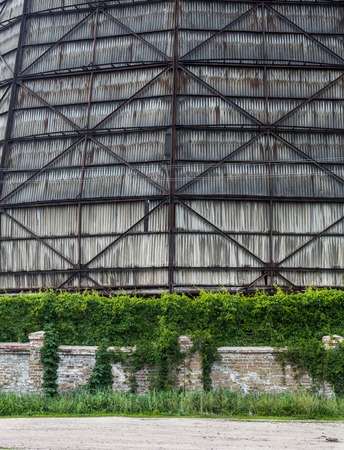Understanding Listed Building Consent: Key Principles
If you are considering any work on a listed property in the UK, it is vital to understand the fundamentals of Listed Building Consent (LBC) before proceeding. Unlike standard planning permissions, LBC is a legal requirement for any alterations, extensions, or demolitions that affect the character of a listed building as a building of special architectural or historic interest. Skipping this step is one of the most common and costly mistakes property owners make.
What is Listed Building Consent?
Listed Building Consent is a specific type of permission required under the Planning (Listed Buildings and Conservation Areas) Act 1990. It safeguards heritage assets by ensuring that any changes respect the building’s historical and architectural significance. The consent applies not only to external works but often to internal changes as well, depending on the grade of listing and the nature of the proposed works.
Why Is It Essential?
Failing to obtain LBC when needed can result in enforcement action, criminal prosecution, and even requirements to reverse unauthorised works at your own expense. Local planning authorities are very strict about compliance, as listed buildings are considered irreplaceable elements of national heritage.
How Is LBC Different from Standard Planning Permission?
| Aspect | Listed Building Consent | Standard Planning Permission |
|---|---|---|
| Purpose | Protects historical/architectural value | Controls land use and development |
| Scope | Covers internal & external works affecting character | Mainly external appearance and land use |
| Legal Framework | Planning (Listed Buildings & Conservation Areas) Act 1990 | Town and Country Planning Act 1990 |
| Application Process | May require heritage statements & specialist input | Simpler forms, less specialist documentation |
The unique requirements for LBC mean applications must be more detailed and considerate than standard planning applications. Heritage statements, detailed drawings, materials specifications, and sometimes conservation officer consultations are necessary. Understanding these key principles lays the groundwork for avoiding common application errors covered in subsequent sections.
2. Incomplete or Inaccurate Application Documentation
Submitting a Listed Building Consent application with incomplete or inaccurate documentation is one of the most frequent and easily avoidable mistakes. Local authorities in the UK require comprehensive and precise information to assess how proposed works will affect the character and significance of a listed building. Omitting essential documents, such as heritage impact statements or submitting inadequate drawings, can lead to unnecessary delays or even refusal of consent.
Common Documentation Errors
| Type of Error | Description | Impact on Application |
|---|---|---|
| Missing Heritage Impact Statement | No assessment of how works affect the building’s heritage value | Application may be deemed invalid or refused |
| Poor-Quality or Inadequate Drawings | Lack of detail, incorrect scales, or missing elevations/plans | Difficult for officers to understand proposals; requests for resubmission likely |
| Lack of Historical Context | No explanation of building’s history, significance, or previous alterations | Insufficient justification for proposed changes; delays in decision-making |
Preparing Thorough Submissions: Key Advice
- Heritage Impact Statement: Always include a detailed statement explaining the historical importance of the building and assessing how your proposal will affect its character and features.
- Detailed Drawings: Provide accurate existing and proposed plans, elevations, and sections at appropriate scales (usually 1:50 or 1:100). Ensure all details are legible and clearly annotated.
- Historical Context: Supply background information about the building’s history, previous uses, and any past modifications. This helps demonstrate your understanding of its significance.
Best Practice Tips for UK Applications
- Consult your local planning authority’s validation checklist before submission.
- If unsure, engage a conservation architect or heritage consultant familiar with British listed buildings.
- Label all documents clearly with project addresses, drawing numbers, and dates.
Avoiding Documentation Pitfalls
The more thorough your documentation, the smoother your consent process will be. Double-check requirements against local guidelines and seek professional advice where needed—this small investment upfront can save months of frustration later.

3. Misinterpreting the Scope of Consent
One of the most frequent pitfalls in listed building consent applications is misunderstanding what actually requires consent. Many property owners mistakenly believe that only major works, such as extensions or demolitions, necessitate official permission. In reality, the scope of consent is much broader and covers any alterations—internal or external—that could affect the character of a listed building as a structure of special architectural or historic interest.
Common Mistakes Regarding Works Requiring Consent
Failing to recognise the full breadth of works needing consent can lead to unauthorised changes, enforcement action by local authorities, and even legal penalties. Below is a table highlighting typical misconceptions:
| Type of Work | Common Assumption | Actual Requirement |
|---|---|---|
| Internal alterations (e.g., removing walls, fireplaces) | No consent needed if not visible externally | Consent required if it affects character |
| Painting or redecorating exterior | Considered routine maintenance | May require consent if it changes appearance or uses inappropriate materials/colours |
| Changing windows or doors | Permitted as like-for-like replacement | Consent required, especially for material or design change |
| Adding fixtures (satellite dishes, solar panels) | No need for consent if reversible | Consent usually required due to impact on appearance |
| Garden works (boundary walls, gates) | No impact on listed status | Consent often required for curtilage structures |
The Importance of Comprehensive Assessment
It’s crucial to remember that listed status applies to the whole property—including interiors, ancillary buildings, and sometimes even landscape features. Even seemingly minor interventions can have a significant effect on a building’s character. Therefore, always seek advice from your local conservation officer before starting any work, no matter how trivial it may seem.
4. Neglecting Professional Advice and Engagement
One of the most frequent missteps applicants make in listed building consent applications is overlooking the value of professional advice. Failing to consult with conservation officers, heritage consultants, or experienced tradespeople can result in significant setbacks, including rejected applications, unnecessary delays, or even enforcement actions. Early and proactive engagement with local authorities and specialists ensures that your proposals respect both the historic fabric and regulatory requirements of listed buildings.
Why Professional Input Matters
Listed buildings are protected for their special architectural and historical significance. Professionals such as conservation officers and heritage consultants understand the nuances of these protections and can guide you on appropriate materials, methods, and design details. Tradespeople with experience in historic properties can identify potential risks to the structure’s integrity that may not be obvious to those unfamiliar with period construction.
Common Issues from Lack of Consultation
| Issue | Impact | How Early Engagement Helps |
|---|---|---|
| Inappropriate Materials Used | Damage to original fabric, refusal of consent | Professionals advise on compatible materials from the outset |
| Poorly Justified Proposals | Lack of evidence leads to application rejection | Heritage consultants prepare thorough statements of significance |
| Overlooking Required Surveys or Reports | Delays due to incomplete documentation | Specialists identify necessary supporting documents early on |
| Non-Compliance with Local Policies | Breach of planning regulations, enforcement action | Conservation officers highlight relevant policies during pre-application discussions |
The Importance of Engaging Local Authorities Early
Establishing contact with your local authority’s conservation officer before submitting an application can clarify expectations and prevent misunderstandings. Most councils offer pre-application advice services, which help applicants avoid common pitfalls by identifying issues early in the process. By involving the right professionals at each stage—from initial concept through to completion—you demonstrate a genuine commitment to preserving the character and integrity of your listed property.
5. Overlooking the Importance of Materials and Workmanship
One of the most frequent mistakes in listed building consent applications across the UK is the use of inappropriate materials or modern interventions that do not respect the heritage value of the property. Many applicants underestimate how crucial it is to specify both traditional materials and time-honoured construction techniques when planning works on listed buildings. Local authorities and conservation officers are particularly vigilant about ensuring any repairs, alterations, or extensions are sympathetic to the original fabric.
Common Material-Related Errors
| Frequent Error | Potential Impact |
|---|---|
| Use of modern cement mortar instead of lime mortar | Traps moisture, causes brick or stone damage, and alters appearance |
| Replacement of original timber with UPVC windows/doors | Loss of character, potential refusal of consent, negative impact on property value |
| Installing modern roofing materials (e.g., concrete tiles) | Mismatched aesthetics, structural issues due to weight difference, possible enforcement action |
Guidance for Specifying Materials and Techniques
To avoid these pitfalls, always research and propose materials that match or closely resemble those used in the original construction. Referencing historic records, existing fabric analysis, or guidance from Historic England can be invaluable. Furthermore, employing skilled tradespeople familiar with traditional methods such as lime plastering, lead work, or hand-forged ironmongery is essential. The choice of contractor can be as important as the material itself.
Checklist: Best Practices for Material Specification
- Document all existing materials with photos and descriptions before specifying replacements.
- Source reclaimed or bespoke materials where appropriate.
- Cite relevant British Standards or conservation guidelines in your application.
- Consult your local Conservation Officer early if unsure about a proposed material or technique.
- Avoid generic product specifications; tailor every detail to the building’s age and character.
Remember:
The right materials and workmanship not only support your consent application but also ensure that future generations inherit a building that remains true to its heritage.
6. How to Avoid Refusal: Practical Steps and Local Best Practice
Securing Listed Building Consent can be challenging, but by following proven strategies and embracing local best practice, you can significantly increase your chances of approval. Below are practical steps tailored for UK applicants, focusing on robust proposal presentation, community engagement, and learning from successful cases.
Engage in Early and Meaningful Local Consultation
Consulting with local planning authorities, conservation officers, and heritage groups before submitting your application is crucial. Early dialogue ensures you address concerns proactively and demonstrate respect for the building’s historic character. Consider holding a pre-application meeting to clarify requirements and expectations.
Checklist: Key Stakeholders to Consult
| Stakeholder | Why Consult? |
|---|---|
| Local Planning Authority | Guidance on policy compliance and application completeness |
| Conservation Officer | Expert advice on heritage significance and sensitive interventions |
| Historic England or Local Amenity Societies | Independent perspectives on national/local heritage impact |
Respect and Retain Historic Character
Your proposals should clearly show how original features will be preserved or sensitively adapted. Use accurate materials, traditional techniques, and avoid irreversible changes. Detailed drawings, photographs, and a thorough Heritage Statement are essential evidence of your commitment to conservation principles.
Best Practice Example: Detailing Sensitive Works
| Feature | Sensitive Approach |
|---|---|
| Sash Windows | Repair rather than replace; if replacement is unavoidable, use like-for-like timber profiles |
| Lime Plaster Walls | Patching with lime-based products instead of cement renders |
Learn from Successful Applications
Study previous consent approvals in your area to understand what worked well. Most local authorities publish decisions online—review these documents to identify common themes such as detailed justifications, strong photographic evidence, and clear demonstration of public benefit or minimal harm.
Troubleshooting: Common Pitfalls & Solutions
| Mistake | How to Avoid It |
|---|---|
| Poorly documented proposals | Provide comprehensive plans, schedules of works, and before/after visuals |
| No community engagement | Document consultations and incorporate feedback into your design rationale |
By following these practical steps—engaging locally, respecting historic fabric, and learning from what has previously succeeded—you’ll not only reduce the risk of refusal but also contribute positively to the ongoing care of Britain’s unique built heritage.


